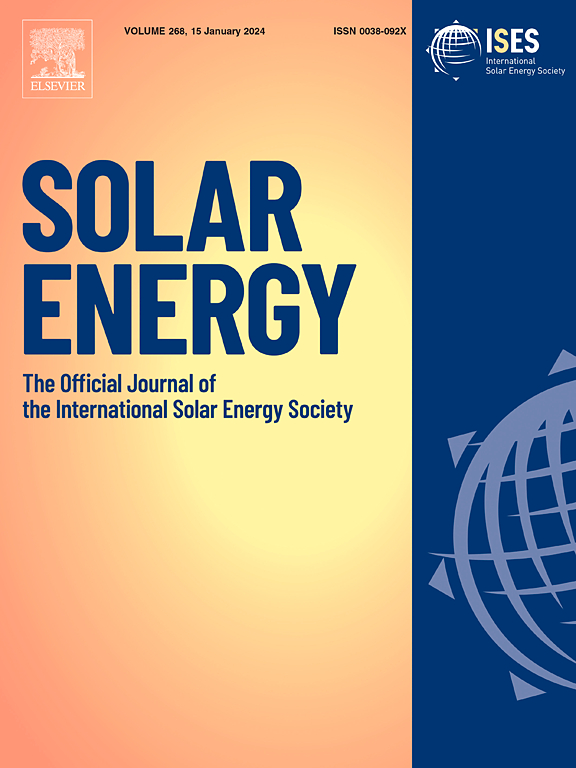Experimental impacts of transparency on strawberry agrivoltaics using thin film photovoltaic modules under low light conditions
IF 6
2区 工程技术
Q2 ENERGY & FUELS
引用次数: 0
Abstract
This study determines the effects of varying lighting conditions from agrivoltaics on strawberry growth and yield by investigating strawberry production under thin-film cadmium telluride PV modules. The goal of this study was to assess the impact of varying PV transparency on strawberry yield and growth under Cd-Te PV modules, and to evaluate the potential of agrivoltaics as a sustainable solution for strawberry production in northern climates. Seven levels of transparency (10%, 30%, 40%, 50%, 60%, 70%, and 80%) were tested, which resulted in varying photosynthetically active radiation (PAR) values under each PV module type. Modules were tested in a controlled environment designed to replicate outdoor conditions of London Ontario, with regulated temperature and lighting. Strawberry fresh weight, plant height, leaf count, and flower count were quantified. The results indicate that strawberries grown under 70% transparency PV exhibited a fresh weight 140.6% of the average control. Additionally, 40% transparency maintained a greater than 80% yield making them viable in all regions with agrivoltaics yield mandates. Increased transparency in PV modules also correlated with a higher number of leaves, while height correlation was complex. If Canadian strawberry farms converted to agrivoltaics, between 595 and 1,786 GWh of solar electricity could be generated and globally strawberry agrivoltaics offer an electrical potential ranging from 58 to 173 TWh. The adoption of agrivoltaics in the strawberry sector could facilitate energy self-sufficiency and transform it into a net electricity exporter, generating additional revenue for farmers.
本研究通过调查碲化镉薄膜光伏组件下的草莓生产情况,确定农业光伏的不同光照条件对草莓生长和产量的影响。这项研究的目的是评估不同的光伏透明度对碲化镉光伏组件下草莓产量和生长的影响,并评估农业光伏作为北方气候条件下草莓生产的可持续解决方案的潜力。测试了七种透明度水平(10%、30%、40%、50%、60%、70% 和 80%),从而得出每种光伏组件类型下不同的光合有效辐射 (PAR) 值。组件在受控环境中进行了测试,该环境旨在复制安大略省伦敦市的室外条件,并对温度和光照进行了调节。对草莓鲜重、株高、叶片数和花数进行了量化。结果表明,在 70% 透明度光电池下生长的草莓鲜重是平均对照的 140.6%。此外,40% 透明度下的草莓产量保持在 80% 以上,这使它们在所有规定了农业光伏产量的地区都能生存。光伏组件透明度的增加也与叶片数量的增加有关,而高度的相关性则比较复杂。如果加拿大草莓农场转用农业光伏技术,可产生 595 至 1786 千兆瓦时的太阳能电力,而全球草莓农业光伏技术可提供 58 至 173 太瓦时的电力潜力。在草莓行业采用农业光伏技术可促进能源自给自足,并将其转变为净电力出口国,为农民带来额外收入。
本文章由计算机程序翻译,如有差异,请以英文原文为准。
求助全文
约1分钟内获得全文
求助全文
来源期刊

Solar Energy
工程技术-能源与燃料
CiteScore
13.90
自引率
9.00%
发文量
0
审稿时长
47 days
期刊介绍:
Solar Energy welcomes manuscripts presenting information not previously published in journals on any aspect of solar energy research, development, application, measurement or policy. The term "solar energy" in this context includes the indirect uses such as wind energy and biomass
 求助内容:
求助内容: 应助结果提醒方式:
应助结果提醒方式:


